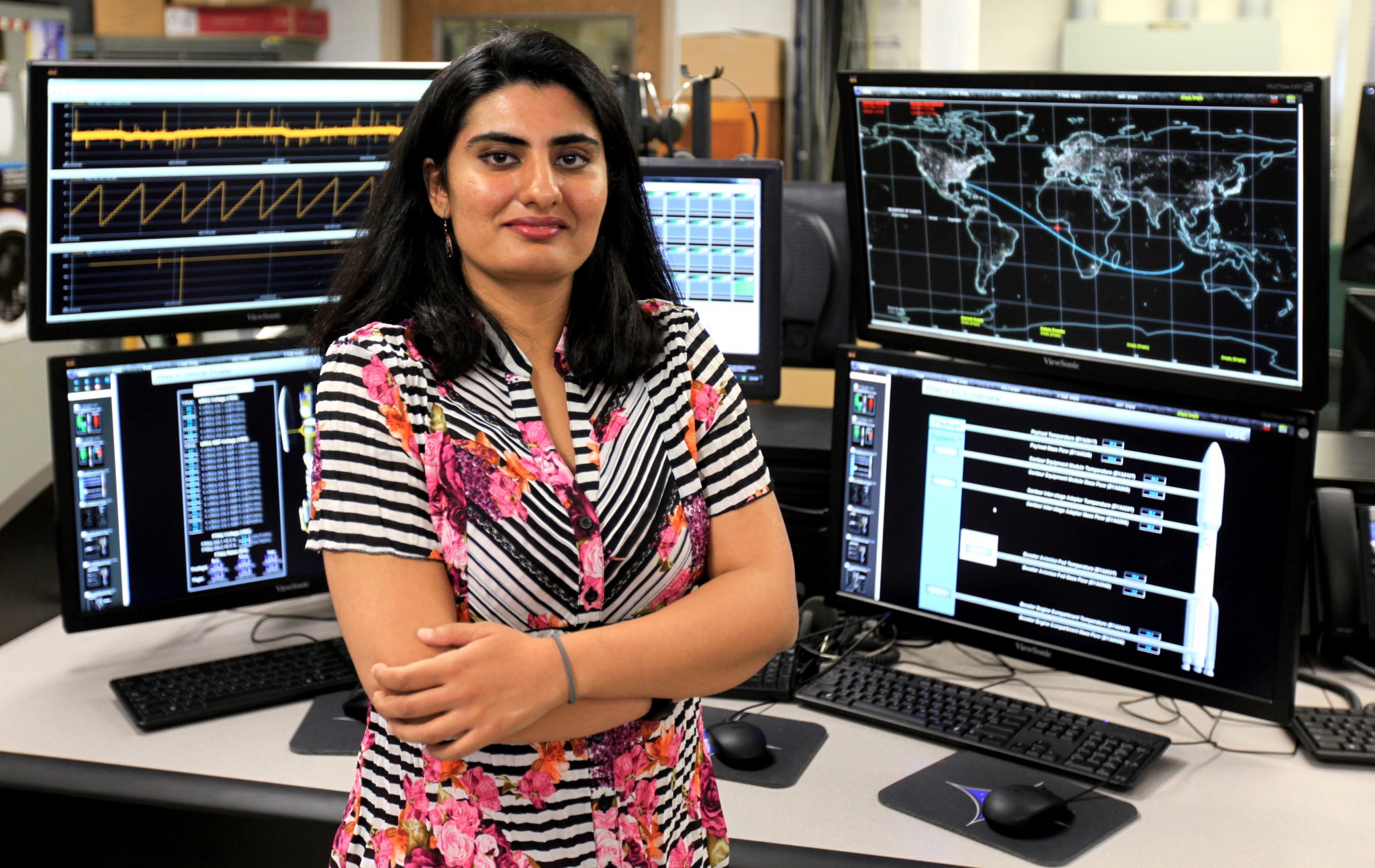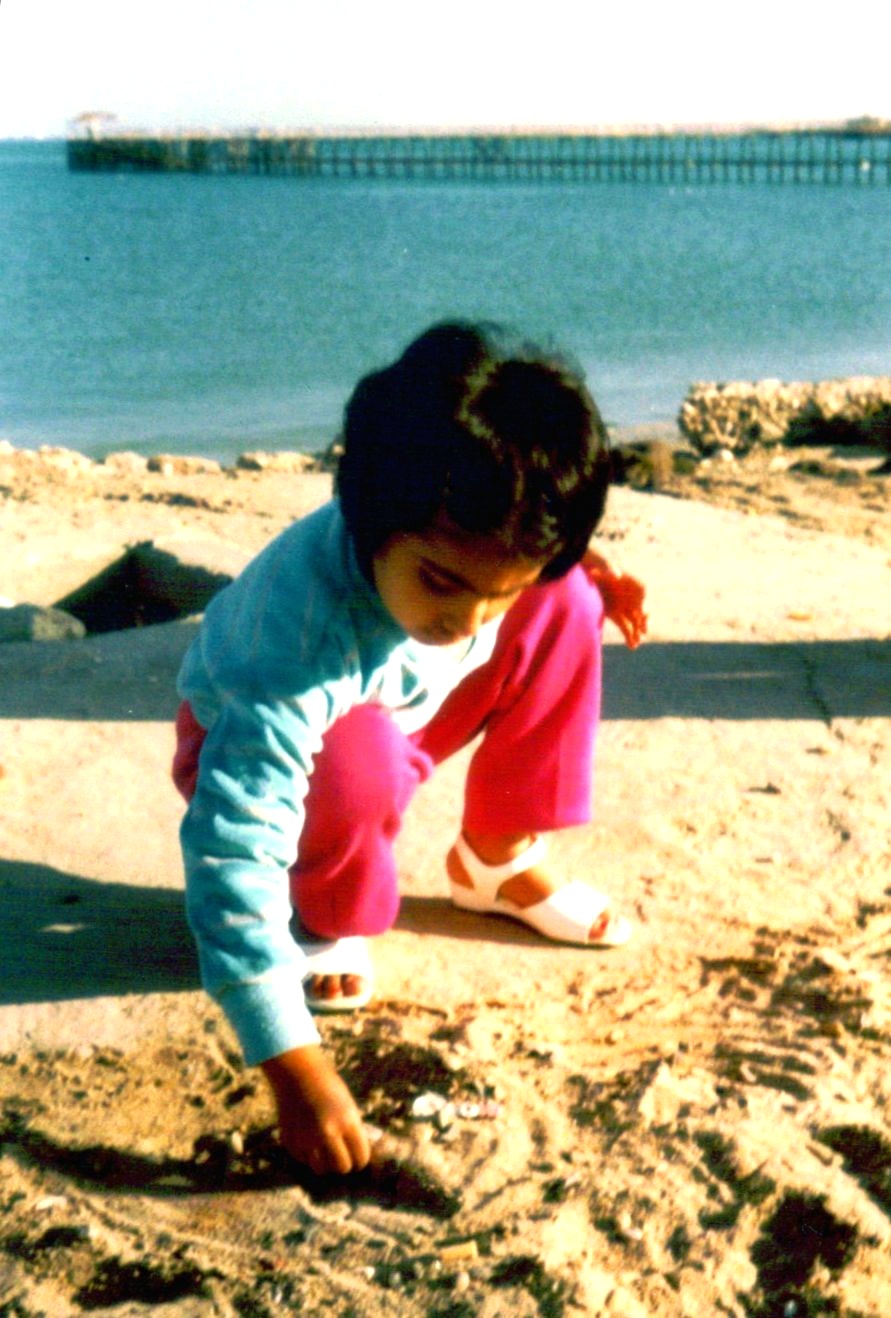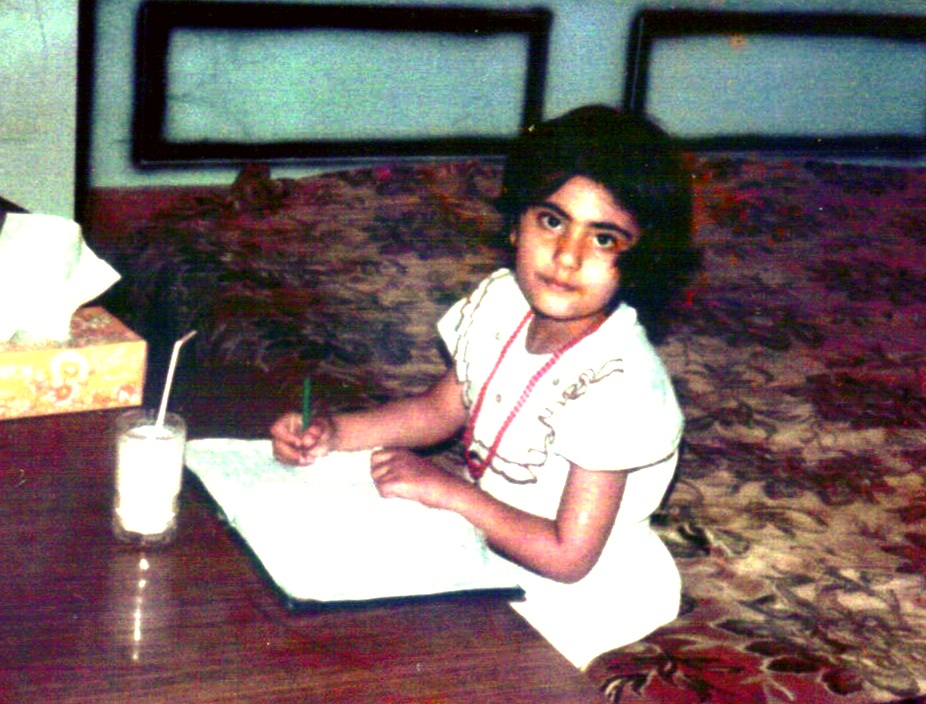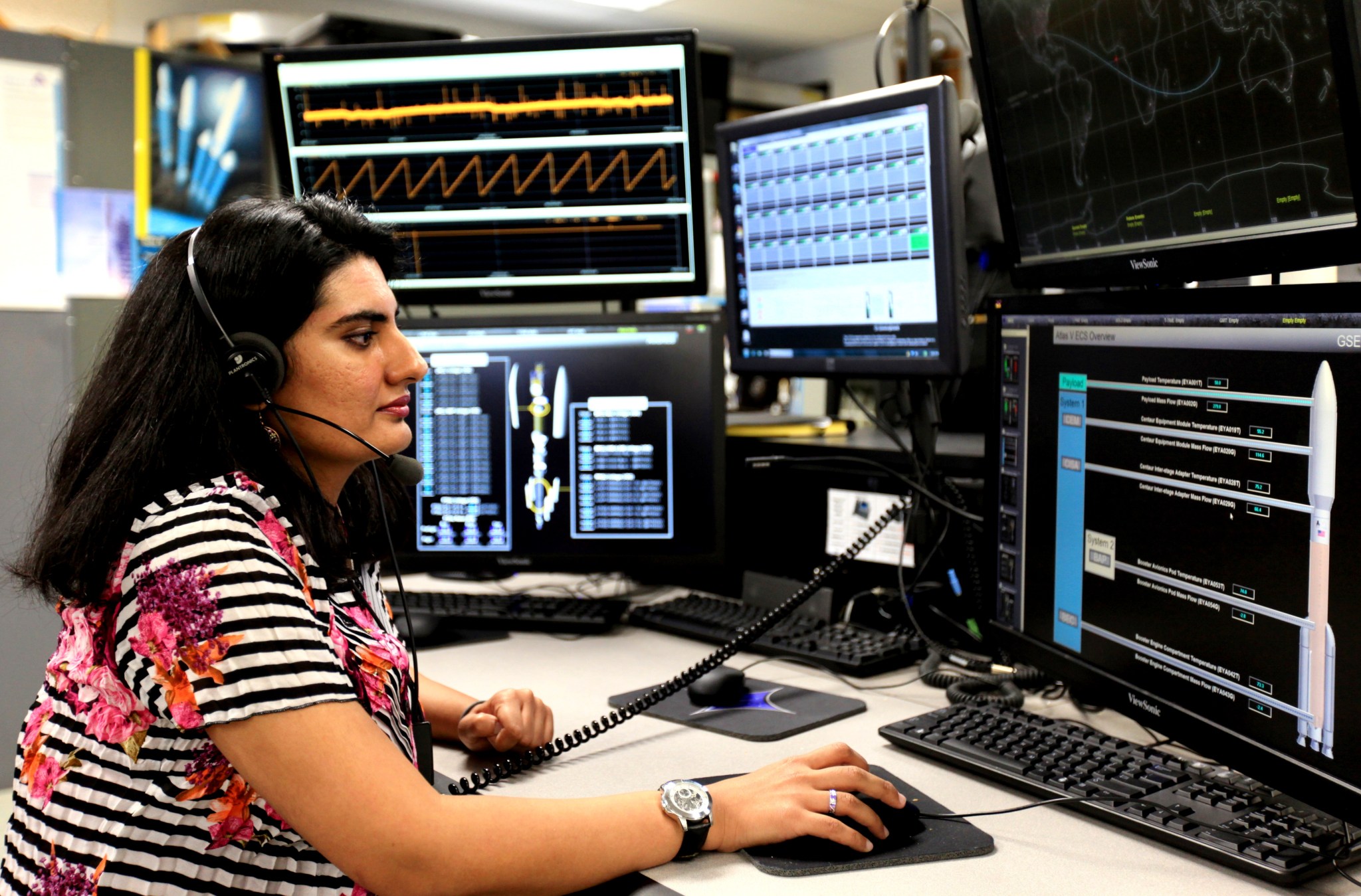Hibah Rahmani likes to encourage young people, especially girls, to “stay focused and dream big.” That’s the philosophy she has followed since growing up in Kuwait and looking up at the night sky in awe of the moon and stars. Today, Rahmani is an avionics and flight controls engineer in NASA’s Engineering and Technology Directorate, helping launch rockets from the Kennedy Space Center in Florida.
Rahmani was born in Pakistan, but she and her family moved to Kuwait when she just a month old.
“My fondest memory growing up is taking walks with my family at night, either in the desert or on the sidewalk by the Arabian (Persian) Gulf, looking up at the sky to admire the moon and stars, and thinking about astronauts such as Neil Armstrong who have stepped on the moon,” she said. “It was around this time I developed a passion for science, space and astronomy.”
That peaceful childhood was interrupted when Iraqi troops invaded Kuwait in August 1990. While the attack was met with international condemnation, refugees fled westward across the desert. Rahmani, her mother and sister were among them, taking a bus and eventually reaching an area known as “no-man’s-land” near the Iraqi-Jordanian border.
“We arrived late at night,” she said. “We could not get a tent since all of them were taken by other refugees. Even though this was a tough time for us, one of the things I remember from that night was having a nice view of the sky with the golden moon and stars, while trying to sleep on the cold desert sand. It reminded me of my goals and dreams.”
After staying in Jordan for a few days, Rahmani along with her mother and sister, traveled to Pakistan. Rahmani’s father was in the United States at the time of the invasion, but flew to Pakistan to be reunited with his family.
The U.S.-led coalition was successful in expelling the Iraqi forces from Kuwait with a ceasefire agreement negotiated and signed on Feb. 28, 1991.
Rahmani and her family moved back to Kuwait the following year and her aspirations continued as she decided to become an engineer.
“My parents always emphasized the value of a good education and hard work,” Rahmani said. “Math and science were my favorite subjects in school. Math was also my dad’s favorite subject and he used to tell me that I should try to get 100 percent marks on my math tests.”
After completing high school in Kuwait, Rahmani moved to the United States in 1997 to pursue a bachelor’s degree in computer engineering at the University of Central Florida (UCF).
“I remember physics being my first hard class and I did not do well on the first exam,” she said. “I went to the library and spent hours and hours there, reading physics books and practicing problems. When time came for the final exam, I calculated that I needed to get exactly a 100 on the exam to get an ‘A’ in the class. I could not believe that I received a 105 on the exam. I even got the bonus question right.
“This experience reemphasized to me that anything is possible with consistent hard work and dedication, and to never give up on your goals and dreams,” she said.
After graduating from UCF in 2000, Rahmani went to work for Boeing at Kennedy as a systems engineer working on processing the International Space Station (ISS).
“I was involved with integrated testing of the ISS components and sometimes astronauts would stop by to either view or participate in the testing,” she said. “It is during this time that I developed a strong desire to become an astronaut and started taking steps toward that goal.”
This new ambition led to a new objective — while still working full-time.
“I knew that in order to become an astronaut I had to pursue an advanced degree,” she said, “so between 2002 and 2005, I obtained a master’s degree in electrical and computer engineering from Georgia Tech.”
In 2008, Rahmani accepted her current position with NASA at Kennedy in the Engineering and Technology Directorate.
“I support NASA’s Launch Services Program, working on expendable launch vehicles such as the Pegasus XL and Falcon 9,” she said. “I provide technical expertise, follow launch vehicle testing, perform data reviews and provide technical assessments of engineering issues.”
Pegasus is Orbital Science Corp.’s rocket dropped from beneath an L-1011 aircraft for launching payloads such as NASA’s Interface Region Imaging Spectrograph (IRIS) solar observatory. Falcon 9 is the SpaceX launch vehicle used to boost the Dragon spacecraft for space station resupply missions and has also been selected to launch the Jason-3 spacecraft.
“The happiest and most exciting moment of my job is to watch a rocket take off from the launch pad and go into space,” she said.
Passion for her work is evident when Rahmani volunteers for outreach and Public Affairs activities to inspire others.
“I have the privilege of working with an amazing team, while doing what I love,” she said. “I speak to students at local schools about my career and have volunteered as a science fair judge.”
For Rahmani, her key to success is setting high goals and putting in the effort to get there.
“The experiences of my life have taught me to always dream big and to never give up,” she said, “because you can achieve whatever you want if you work hard.”
This feature and much more is now available in the April edition of Spaceport Magazine at: https://www.nasa.gov/wp-content/uploads/2015/03/april2014.pdf?emrc=79f0e1




























